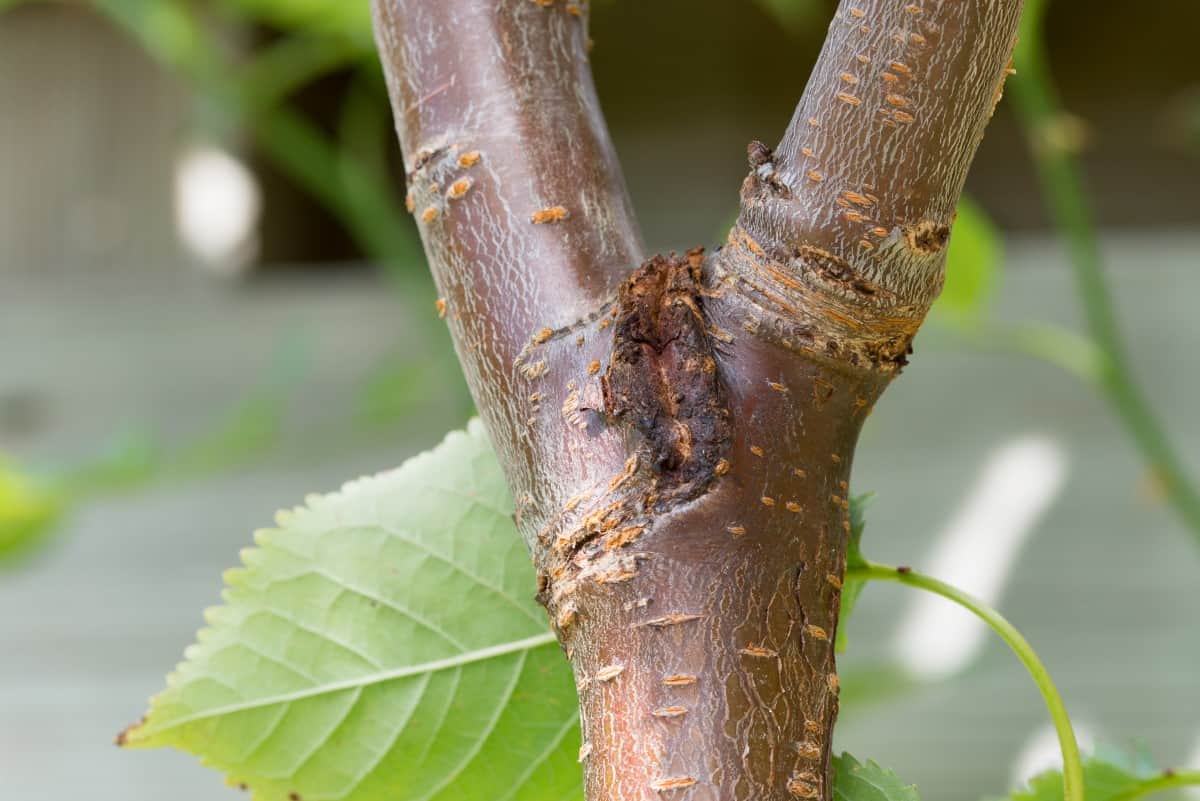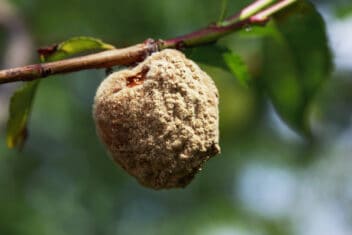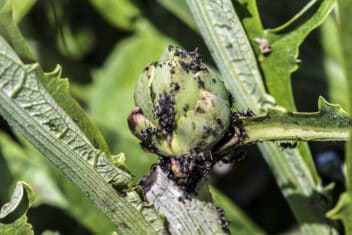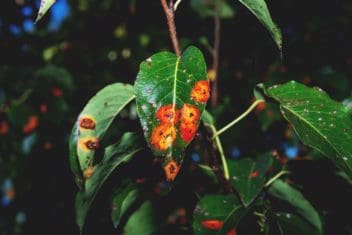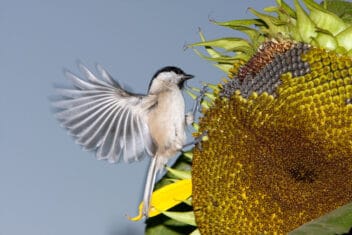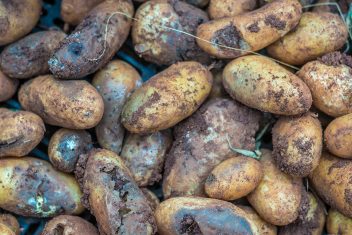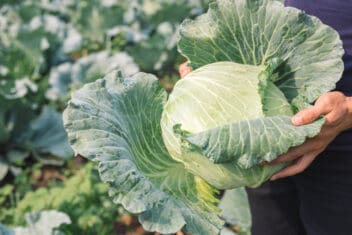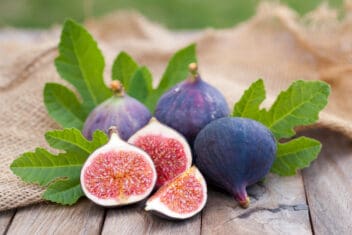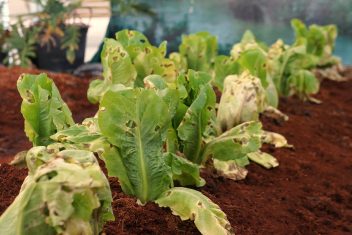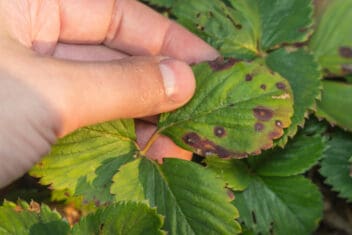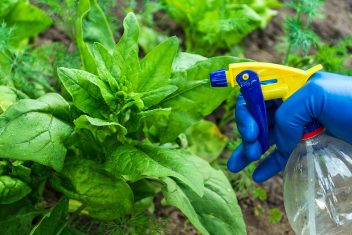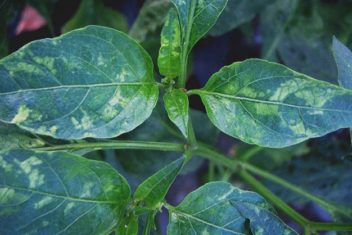For the most part, I’ve been fortunate that my garden plants stay more or less healthy regardless of whatever it is Mother Nature happens to throw at them!
Part of this can be attributed, I am sure, to the fact that we use ample amounts of aged compost on our plants. I do believe that compost helps to balance out soil nutrients, prevent pests, and limit diseases.
Of course, there are plenty of diseases out there that probably aren’t so easy to prevent or treat with a little bit of compost. One of these is bacterial canker. It’s common on trees, including many common fruit tree species that you might see on the average homestead.
Although bacterial canker can be lethal, there are several simple steps you can take to treat and prevent this frustrating disease.
What Is Bacterial Canker?
Bacterial canker is a disease that affects trees in the Prunus genus. This includes species like plum, peach, and cherry. Also known as spur blight, twig blight, blossom blast, gummosis, and even simply sometimes just dieback, this disease presents several noticeable symptoms that, left untreated, can prove to be fatal.
It is caused by the bacteria Pseudomonas syringae pv. Syringae (Pss) but can also be caused by P. syringae pv. mors-prunorum (Psm). These species overwinter on the tree as well as in infected branches that are asymptomatic. They can also be found in the buds of infected trees.
This bacteria occurs naturally on the leaves of many plants as well as in several kinds of weed species. It is frequently spread by rain, insects, and wind and can also be transmitted via pruning, particularly if you aren’t careful about sterilizing your tools. While infections can occur at any time of the year, they are most common during periods of cool, wet weather.
The bacteria live as surface-dwellers, or epiphytes, on leaves. During wet weather, they’ll enter into the leaves’ stomata and cause infections starting in the leaves before moving on to the rest of the tree.
Signs of Bacterial Canker
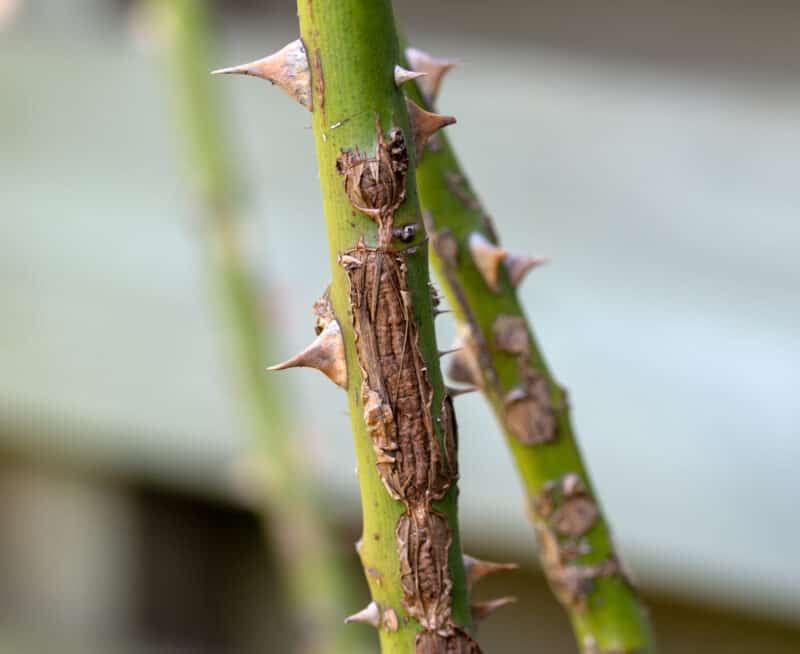
Although there are several types of diseases that can affect your trees, bacterial canker has symptoms that are hard to ignore – and easy to differentiate.
Usually, you’ll notice branch dieback as the first symptom of bacterial canker. It can also cause symptoms like the death of leaves, fruits, and flowers, though, so keep an eye on the entire tree and not just the branches.
Often, infected trees show no symptoms at the beginning of their infestation. A unique symptom of infected trees in the early stages is when the centers of leaf spots fall out, a process known as shotholing. The entire leaf may eventually fall off the tree, too.
Fruits begin to show infection as dead spots that are surrounded by water-soaked tissue. These spots can turn into fruit rot. A trunk or branch infection can occur at pruning sites, leading to cankers (or sunken dead areas). Cankers tend to produce a resinous ooze, with wood in this area looking discolored and sickly.
As for the shoots of your trees, you may notice that these either fail to emerge or grow normally in the spring before suddenly dying back. This can affect a large number of shoots.
When a bacterial canker infection is advanced, you may even notice that the whole tree begins to die back.
What Plants Are Affected By Bacterial Canker?
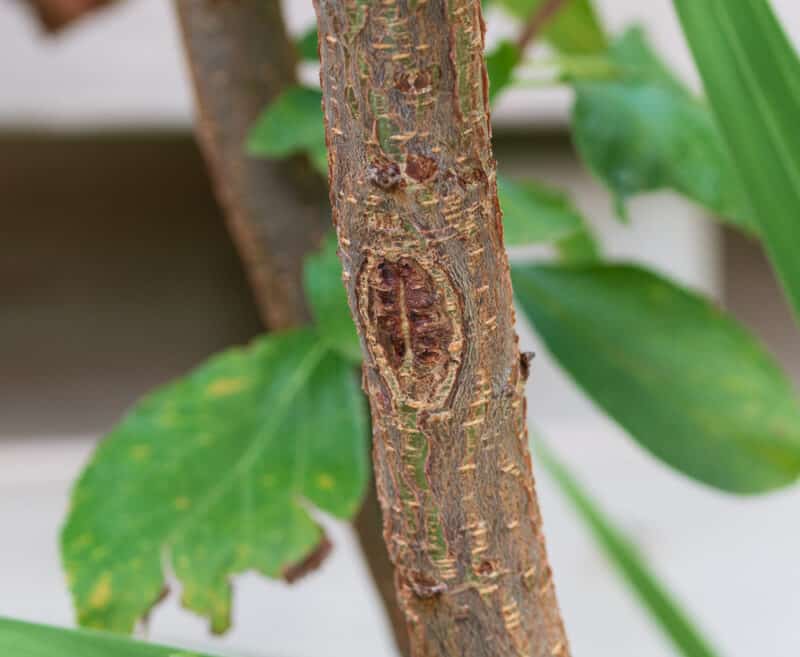
Bacterial canker is widely distributed throughout the US and is most common on cherry and plum trees. However, it can also affect apricots, peaches, and other stone fruits. It can even impact plants such as cherry laurel.
There is another type of bacterial canker that affects plants in the Solanaceae family, such as tomatoes, peppers, and eggplants. This disease is spread by a different type of bacteria, one known as Clavibacter michiganense subsp. michiganense. Preventing and treating this kind of bacterial canker, however, requires almost the exact same steps.
How to Prevent Bacterial Canker
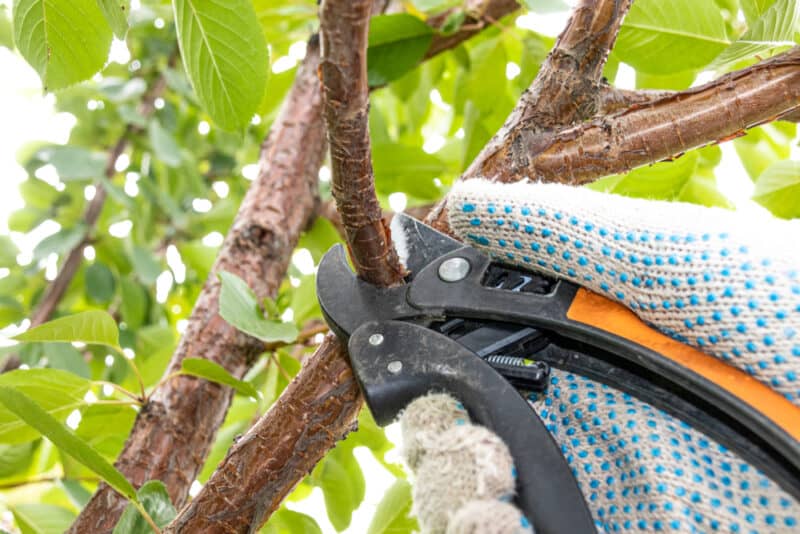
There are several simple steps you can take to prevent bacterial canker.
1. Proper Pruning
When you prune, only do so in the winter or dry periods, avoiding wet periods of fall and spring, as this is the most common time for an infection to be transmitted. When pruning, make sure you take the time to thoroughly sanitize your tools.
The best time to prune trees is usually during blooming when wounds heal the fastest. When you prune, remove any wilted or dead limbs, even if you aren’t sure that bacterial canker is to blame.
After pruning, treat all of your cuts with a pruning sealer. This can help keep bacterial canker pathogens as well as other pathogens out. If you use a string trimmer to cut weeds around the base of the tree, do your best to avoid damaging the tree. You can also use a tree wrap to prevent infection.
2. Keep Plants Healthy
Remember that a healthy tree will withstand an infestation of any kind of disease far better than an unhealthy one. Making sure your trees are watered and fertilized properly is essential.
3. Grow Resistant Varieties
While you might be limited in selecting a resistant kind of tree, you might have some luck with species such as ‘Merton Glory,’ ‘Merton Premier,’ ‘Merpet,’ and ‘Merla,’ if you are looking for resistance to bacterial canker in cherries. Plum trees like ‘Warwickshire Drooper’ and ‘Marjorie’s Seedling’ are also known to be resistant.
4. Weed Heavily
You should also do your best to keep weeds clear from around the trees, as these can harbor pathogens that can make your trees fall victim to an infestation. Both weeds and grass need to be removed to reduce bacterial habitat as well as to keep the crown and trunk of the tree dry.
5. Check the Soil pH

Check your soil pH if you want to prevent bacterial canker. Often, amending it with lime if it is too acidic can help relieve some of the potential risks. Just amend the top 16-inches or so of the soil.
You can also use foliar spray that contains micronutrients like boron and zinc to help strengthen your plant’s defenses. These are especially effective if applied in the wet seasons of spring or fall.
6. Watch for Nematodes
Nematodes are known to increase tree stress levels, so if you have to replant trees, be careful to fumigate and select species that are grafted onto nematode-resistant rootstocks. This will help protect your trees from future infestation.
7. Use Latex Paint
Consider using a bit of latex paint (you can dilute it with water) to reduce the impact of temperature fluctuations on the bark of your trees. By reducing these temperature fluctuations, you can also reduce the likelihood of bacterial canker settling in for the long haul on your trees.
How to Treat Bacterial Canker
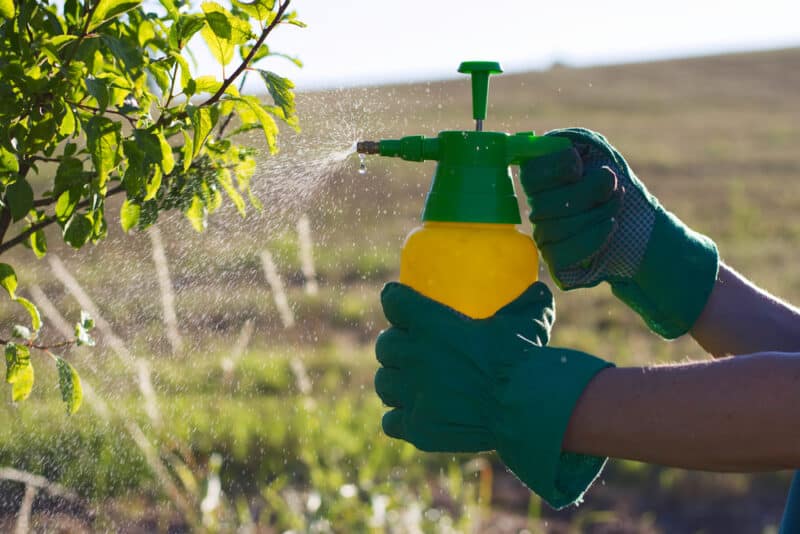
Bacterial canker can be treated with a few simple steps.
1. Prune Infected Trees
First, begin by pruning your infected branches at least 12-inches below the cankers or other dead tissue. Dispose of branches either by burying or burning them. After each use, disinfect your pruning tools (dip them for at least a minute in a 10% bleach solution).
Get rid of all infected branches – don’t compost them, or you run the risk of the disease continuing to spread.
2. Use a Copper Spray
You may also need to use a copper-containing spray to manage this disease. There are some strains of bacteria that are resistant to copper sprays, so check with your local cooperative extension to find out what is recommended in your area.
3. Try a Fungicide
There are some organic fungicides you can use to treat a bacterial canker infection, too. One option is a fungicide containing phosphorous acid. This should work nicely as a systemic fungicide, treating a large number of diseases besides just bacterial canker. It usually needs to be mixed at a ratio of ⅓-¾oz per gallon of water. You can spray or paint it over wounds.
Prevention and Control
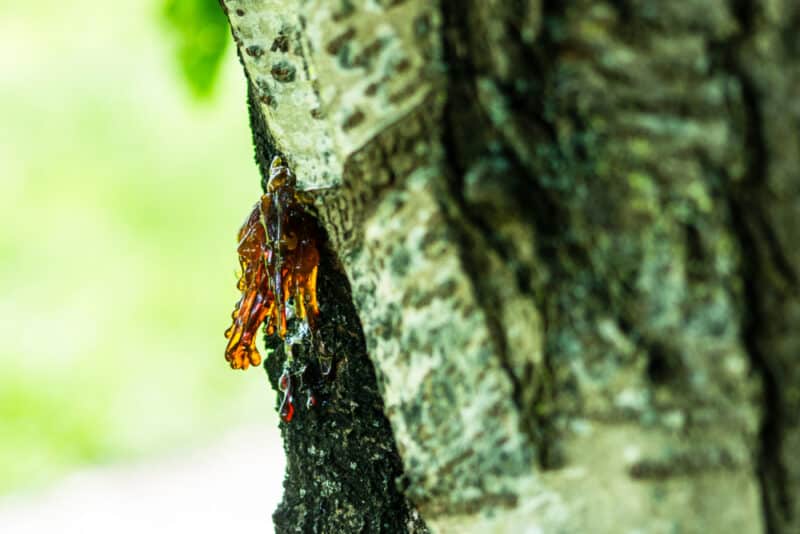
Bacterial canker is easy to prevent and control by following some basic garden hygiene tips – and acting quickly once you start to notice symptoms. Treating this disease is largely mechanical in nature. You’ll need to bust out the pruning tools!
Don’t panic if you notice symptoms on your trees. You’ve worked hard to cultivate your homestead orchard, and while bacterial canker can be lethal if left untreated, not all is lost. Follow the steps above, and you should be able to take care of the disease before it becomes more problematic.
